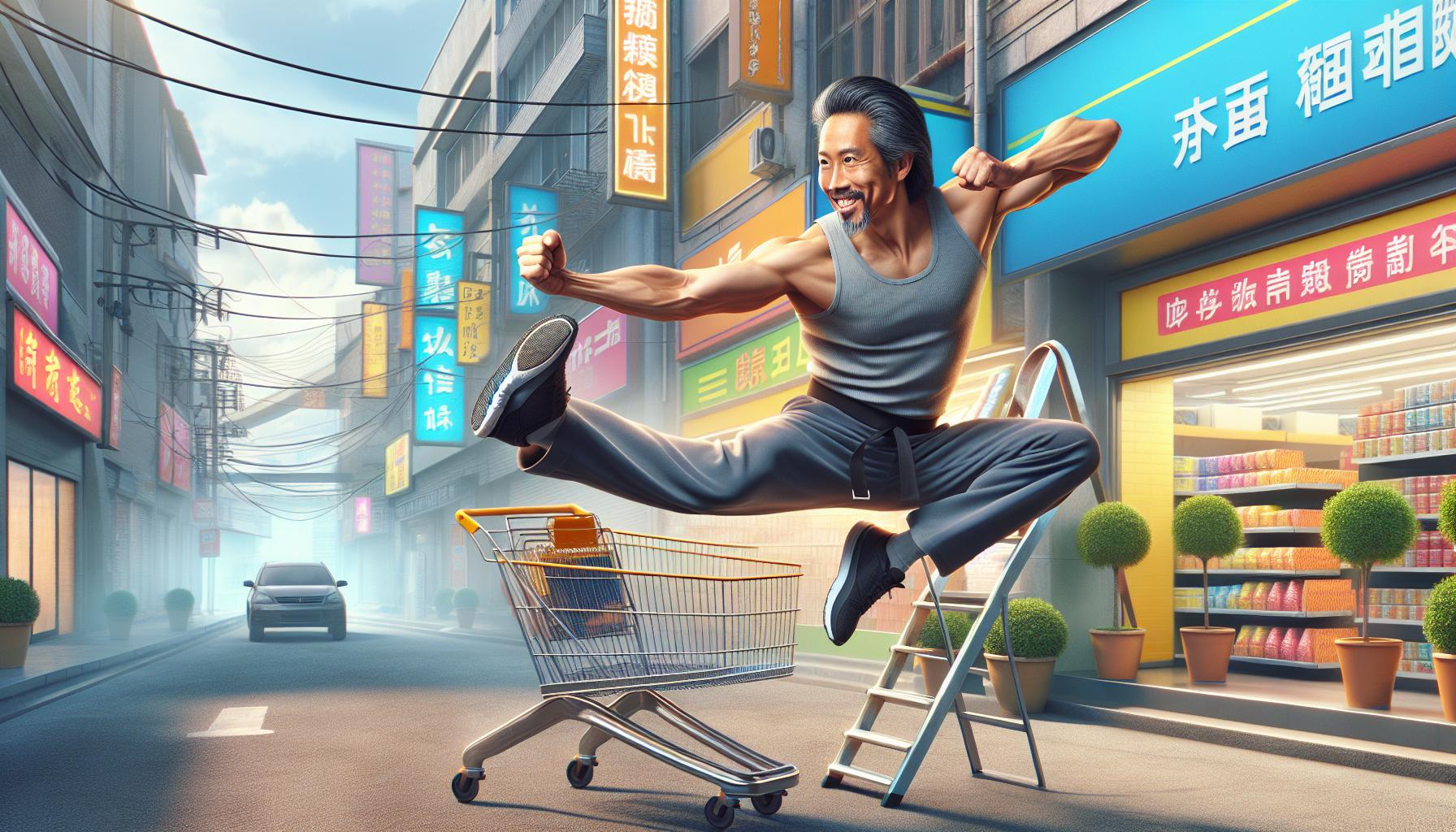The Best Fluffy Pancakes recipe you will fall in love with. Full of tips and tricks to help you make the best pancakes.
Kung Fu comedy movies blend lightning-fast martial arts with gut-busting humor creating an irresistible entertainment cocktail that’s entertained audiences for decades. From Jackie Chan’s legendary stunts to Stephen Chow’s absurdist wit these films have mastered the art of making people laugh while delivering spectacular action sequences.
The genre took root in Hong Kong during the 1970s when filmmakers discovered that adding comedic elements to traditional martial arts films could attract wider audiences. Today these movies represent a unique cultural phenomenon that bridges Eastern and Western entertainment sensibilities. With their mix of slapstick humor carefully choreographed fights and often ridiculous storylines kung fu comedies continue to influence modern filmmaking and pop culture around the globe.
The Rise of Kung Fu Comedy in Cinema
Hong Kong cinema transformed martial arts films in the 1970s by introducing comedic elements into traditional kung fu narratives. The Shaw Brothers Studio pioneered this fusion with films like “Half a Loaf of Kung Fu” (1978) featuring Jackie Chan.
Box office success drove the expansion of kung fu comedy films throughout the 1980s. Notable examples include:
- “Snake in the Eagle’s Shadow” (1978) – Combining slapstick humor with authentic martial arts
- “Drunken Master” (1978) – Establishing Jackie Chan’s signature comedic style
- “Winners & Sinners” (1983) – Introducing ensemble comedy to martial arts films
- “Project A” (1983) – Merging period drama with acrobatic comedy
Key performance metrics demonstrate the genre’s commercial impact:
| Year | Film | Box Office (USD) | International Markets |
|---|---|---|---|
| 1978 | Drunken Master | $6.7M | 12 countries |
| 1983 | Project A | $14.5M | 18 countries |
| 1985 | Police Story | $16.2M | 25 countries |
Production studios incorporated specialized stunt teams dedicated to comedic fight choreography. Golden Harvest Studios established a comedy-action unit in 1980, training performers in both martial arts techniques and physical comedy.
The genre’s creative approach influenced Hollywood productions during the 1990s. American studios adapted key elements:
- Rapid editing techniques for fight sequences
- Integration of practical stunts with humorous outcomes
- Character-driven martial arts performances
- Emphasis on timing between combat and comedy
Asian markets responded by developing localized variations of kung fu comedy. South Korea introduced taekwondo elements while Japanese studios incorporated samurai traditions into their comedic martial arts films.
Jackie Chan’s Impact on Action Comedy

Jackie Chan revolutionized action comedy through his innovative blend of martial arts expertise and physical comedy. His unique approach transformed both Hong Kong cinema and global action-comedy filmmaking, establishing new standards for the genre.
Blending Martial Arts with Slapstick Humor
Chan’s signature style combines traditional kung fu techniques with comedic elements inspired by silent film stars like Buster Keaton. His performances in films like “Police Story” (1985) showcase acrobatic stunts integrated with humorous reactions and exaggerated facial expressions. The actor’s training at the Peking Opera School enabled him to execute complex martial arts sequences while maintaining perfect comic timing. His method influenced modern action comedies by demonstrating how fight scenes gain entertainment value through the addition of comedic elements. Notable examples include “Rush Hour” (1998) which earned $244 million worldwide by incorporating Chan’s style with American comedy sensibilities.
Signature Stunts and Comic Timing
Chan’s approach to action sequences emphasizes real stunts performed without special effects or doubles. His performances feature intricate choreography using everyday objects as props: ladders become weapons, shopping carts transform into shields, chairs serve as defensive tools. Each stunt sequence follows a three-part structure: setup, action, reaction with comedic payoff. Films like “Drunken Master II” (1994) demonstrate this formula through elaborate fight scenes incorporating stumbling techniques and humorous defensive moves. The actor’s influence extends to modern franchises that adopt his style of mixing dangerous stunts with comedic elements. Key examples include sequences from “Shanghai Noon” (2000) which generated $99.3 million globally through its combination of Western settings with Chan’s signature style.
Stephen Chow’s Unique Comedy Style
Stephen Chow pioneered a distinctive style of kung fu comedy called “mo lei tau” that blends slapstick humor with martial arts action. His signature approach combines exaggerated facial expressions rapid-fire wordplay physical comedy with impressive martial arts choreography.
From Shaolin Soccer to Kung Fu Hustle
“Shaolin Soccer” (2001) introduced Chow’s innovative blend of CGI-enhanced martial arts comedy earning $42 million worldwide. The film features supernatural soccer moves mixed with kung fu techniques creating visually spectacular action sequences. “Kung Fu Hustle” (2004) elevated this style further grossing $102 million globally through its cartoon-like violence elaborate fight scenes. Both films showcase Chow’s mastery of special effects incorporating wire-work martial arts with computer graphics to create memorable scenes that transcend traditional kung fu comedy limitations.
Breaking Cultural Barriers with Humor
Chow’s films bridge Eastern Western entertainment through universal physical comedy transcending language barriers. His characters speak through exaggerated movements facial expressions creating globally accessible humor. “Kung Fu Hustle” demonstrates this approach through its homages to Hollywood classics Looney Tunes cartoons Bruce Lee films. The film’s success in international markets ($17 million US box office) proves comedy’s effectiveness as a cultural connector. Chow’s integration of Cantonese wordplay Western pop culture references creates a unique cinematic language that resonates with diverse audiences worldwide.
Key Elements of Successful Kung Fu Comedies
Successful kung fu comedies blend precise martial arts choreography with comedic timing to create entertainment that transcends cultural boundaries. The genre combines specific elements that contribute to its enduring appeal across global audiences.
Physical Comedy and Fight Choreography
Physical comedy in kung fu films integrates exaggerated movements with precise martial arts techniques. Expert practitioners like Jackie Chan execute complex fight sequences while incorporating slapstick elements such as pratfalls, facial expressions and prop manipulation. Fight choreographers design sequences that showcase both athletic prowess and comedic moments – for example, a character dodging attacks while balancing tea cups or fighting multiple opponents with household items. The combination demands performers master both martial arts timing and comedic delivery, creating iconic scenes where fighters use environmental objects like ladders, tables or chairs in unexpected ways.
Cultural References and Parody
Kung fu comedies incorporate cultural elements from both Eastern and Western entertainment traditions. Films feature references to classical Chinese literature, mythology and martial arts legends alongside pop culture nods. Directors like Stephen Chow blend Cantonese wordplay with recognizable movie tropes – mixing traditional kung fu training sequences with modern situational comedy. Popular examples include “Kung Fu Hustle’s” parodies of gangster films and “Shaolin Soccer’s” fusion of sports movies with martial arts. These films often subvert common martial arts film clichés through exaggeration or role reversal, such as casting unlikely heroes or reimagining traditional training montages with comedic twists.
Modern Evolution of the Genre
Kung fu comedy experienced significant transformation since 2000 through technological advancements global market influence digital distribution platforms. The genre adapted to changing audience preferences while maintaining its core elements of martial arts action humor.
Hollywood’s Take on Martial Arts Comedy
Hollywood studios embraced kung fu comedy through mainstream releases like “Rush Hour” (1998-2007) “Shanghai Noon” (2000) “Kung Fu Panda” (2008-2016). The integration of martial arts stars into American productions created cross-cultural appeal through established franchises:
| Film Series | Box Office Revenue | Release Years | Number of Films |
|---|---|---|---|
| Rush Hour | $850 million | 1998-2007 | 3 |
| Kung Fu Panda | $1.8 billion | 2008-2016 | 3 |
| Shanghai Noon | $247 million | 2000-2003 | 2 |
American studios incorporated high production values CGI effects extensive marketing campaigns. Major studios partnered with Asian talent integrating Eastern martial arts choreography into Western storytelling formats. Animation expanded the genre’s reach creating family-friendly content that preserved traditional kung fu elements while adding modern humor digital aesthetics.
Hollywood productions emphasized buddy comedy dynamics pairing martial artists with American comedic actors. Studios maintained authentic fight choreography while adding distinctly American humor cultural references dialogue patterns.
Influence on Global Pop Culture
Kung fu comedy films transformed entertainment across multiple mediums, extending beyond cinema into television shows like “Teenage Mutant Ninja Turtles” (1987) and “Wu Assassins” (2019). Gaming franchises adopted the genre’s signature style, with titles such as “Mortal Kombat” incorporating humorous elements into martial arts combat.
Fashion trends emerged from these films, popularizing martial arts attire in streetwear through iconic items like Bruce Lee’s yellow jumpsuit from “Game of Death” (1978). Internet culture embraced kung fu comedy through viral memes featuring scenes from Stephen Chow’s films, generating millions of shares across social platforms.
Popular music integrated kung fu themes, evidenced by:
| Artist/Group | Song | Year | Impact |
|---|---|---|---|
| Carl Douglas | Kung Fu Fighting | 1974 | 11 million copies sold |
| Wu-Tang Clan | Enter the Wu-Tang | 1993 | Triple platinum status |
| Kendrick Lamar | Kung Fu Kenny | 2017 | Cultural phenomenon |
Comedy sketches worldwide incorporated martial arts elements, with shows like “Saturday Night Live” regularly featuring kung fu-inspired segments. Advertising campaigns leveraged the genre’s appeal, using martial arts humor in commercials for major brands like Pepsi Cola Suntory.
Animation studios embraced the style through productions such as:
- “Avatar: The Last Airbender” combining martial arts comedy with fantasy elements
- “Kung Fu Panda” franchise generating $1.8 billion worldwide
- “Samurai Jack” mixing dramatic action with comedic moments
East Asian cinema influenced Hollywood’s action-comedy formula, creating crossover stars like Jackie Chan who redefined physical comedy in Western films. Modern streaming platforms feature dedicated martial arts comedy sections, indicating the genre’s continued cultural significance across global audiences.
Conclusion
Kung fu comedy stands as a testament to cinema’s unique ability to transcend cultural boundaries through the universal languages of action and humor. From its humble beginnings in Hong Kong to its current status as a global entertainment phenomenon the genre continues to captivate audiences worldwide.
The enduring appeal of kung fu comedy lies in its masterful blend of martial arts expertise humor and storytelling. Through the pioneering work of legends like Jackie Chan and Stephen Chow along with modern interpretations in Hollywood blockbusters the genre has proven its remarkable adaptability and staying power.
Today’s streaming platforms digital effects and cross-cultural collaborations ensure that kung fu comedy will keep evolving while maintaining its core appeal for generations to come.

